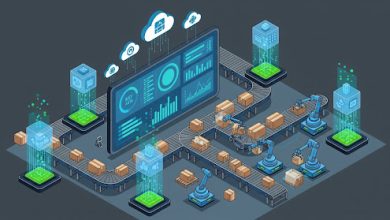Apache Kafka has been a trusted powerhouse in the world of real-time data streaming, and its importance has only grown in the age of artificial intelligence. Think of AI-driven systems that power predictive analytics, dynamic customer interactions, or IoT ecosystems; they all require a platform capable of managing immense volumes of data with exceptional speed and accuracy.
Enter Kafka 4.0. This latest release isn’t just an upgrade; it’s a leap forward, designed to empower developers and enterprises to innovate faster and handle the complex demands of AI like never before. With groundbreaking features that enhance scalability, simplify operations, and revolutionize data workflows, Kafka 4.0 sets a new standard for what’s possible in AI-powered systems.
For a closer look at how AI utilizes real-time data to drive impactful outcomes, explore How AI is Secretly Rewiring Student Brains.
A Brief Look at Kafka’s Evolution
Since its inception, Apache Kafka has played a pioneering role in distributed streaming, offering unparalleled scalability, reliability, and fault tolerance. Over the years, its ecosystem has expanded to include Kafka Streams, Kafka Connect, and tools like schema registries, cementing its reputation as a versatile platform. The release of Kafka 4.0 marks a milestone in this evolution, replacing legacy dependencies, introducing scalable queue semantics, and refining protocols to align with modern development trends.
To better understand Kafka’s foundation and prior advancements, be sure to explore an overview of Kafka’s architecture and its significance in real-time data processing.
Key Features That Define Kafka 4.0
Apache Kafka 4.0 introduces groundbreaking updates designed to close gaps in functionality and align with the demands of today’s data-intensive use cases. Below are the standout features.
- The End of ZooKeeper with KRaft (KIP-500)
Perhaps the most anticipated innovation, Kafka 4.0 eliminates its longstanding dependency on ZooKeeper, fully committing to Raft for Kafka (KRaft) as the default metadata management system. This shift simplifies cluster management, enhances scalability, and reduces the operational risk associated with maintaining two separate systems. For enterprises that rely on Kafka, this consolidation means streamlined deployments and improved security, as all metadata operations now fall under Kafka itself.
To ensure smooth adoption of this KRaft-based architecture, consider leveraging tools provided by a managed platform, where managed services automate cluster upgrades transparently.
- Introduction of Queues for Kafka (KIP-932)
Kafka now supports queue-based message semantics, adding flexibility to consumer group configurations. This update allows multiple consumers to read from the same partition, enabling high-concurrency workloads, such as image processing or machine learning inference. For developers, this means greater adaptability when designing systems that don’t rely on strict message ordering. It’s still labeled as early access, so be careful with production implementations.
- Non-Disruptive Consumer Rebalancing (KIP-848)
Kafka 4.0 solves one of its most notorious pain points by introducing a new consumer group protocol, which removes global barriers during consumer rebalancing. This improvement minimizes downtime in auto-scaling clusters, making Kafka an even better choice for elastic environments like Kubernetes. The protocol also supports seamless migration from older configurations, ensuring compatibility with previous Kafka implementations.
- Refined Developer Tools and Deprecated APIs
Kafka 4.0 enhances its developer experience by simplifying the API landscape. Several outdated classes have been deprecated in favor of modern alternatives, creating a cleaner development framework. For instance, Transformer and Value Transformer are replaced with new processor-based APIs that improve maintainability and consistency in Kafka Streams applications.
Additionally, KIP-653 brings a major upgrade to log management by transitioning to Apache log4j2, offering enhanced performance and security.
- Improved Java Compatibility
Recognizing Java’s central role in enterprise environments, Kafka 4.0 now requires Java 11 or higher for client components and Java 17 for brokers and tools. This upgrade aligns Kafka with long-term support releases, benefiting from advanced security, improved performance, and better maintainability.
For additional insight into integrating these new features, check out this example on Kafka ingestion for real-time systems by Dagster.
Why Kafka 4.0 Matters for Developers and Enterprises
The enhancements introduced in Kafka 4.0 underscore its commitment to staying ahead of the curve in the data streaming ecosystem. By eliminating legacy frameworks, refining developer tools, and improving scalability, Kafka is now better positioned to meet the challenges of modern workloads—from real-time analytics to IoT.
Looking forward, the changes in Version 4.0 ensure that Kafka maintains its usability for organizations of all sizes, whether they operate on-premises, in the cloud, or at the edge.
To explore how AI is transforming enterprise strategies and beyond, check out The Shortcut Era Is Over: How AI, SEO, and Education Are Growing Up.
Take the Next Step with Apache Kafka 4.0
Apache Kafka 4.0 isn’t just a step forward; it’s a reimagining of what real-time data streaming can achieve in the era of AI. From streamlining operations to enabling breakthrough applications, it delivers the tools needed to stay ahead in an increasingly data-driven world. Whether you’re scaling IoT systems, refining machine learning pipelines, or driving real-time analytics, Kafka 4.0 can reshape your approach and unlock new opportunities for innovation.
Don’t wait to discover the future of streaming. Start exploring Kafka 4.0 today and see how it can transform your systems and elevate your enterprise to the next level of performance and scalability. The possibilities are endless, and the time to act is now.
Excited to explore Kafka 4.0? For more information, check out the official Kafka 4.0 release blog, release notes and Kafka documentation.
About the author
Andrew Mills is Senior Solution Architect at NetApp Instaclustr. He brings a deep understanding of open source data management tools including Apache Kafka, Apache Cassandra, Apache Spark, PostgreSQL, and ClickHouse. Andrew helps current and future NetApp Instaclustr customers with data layer problems, as they venture into event driven architecture or expand existing use cases. He has 14+ years of experience in the technology industry, previously serving in multiple senior development and architecture roles.





